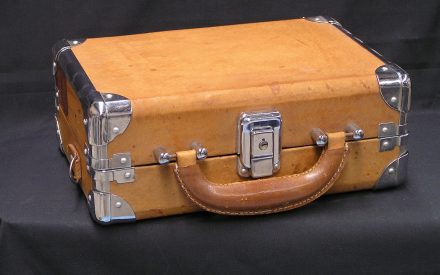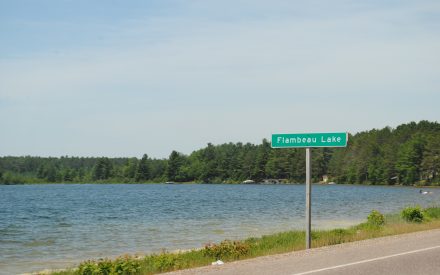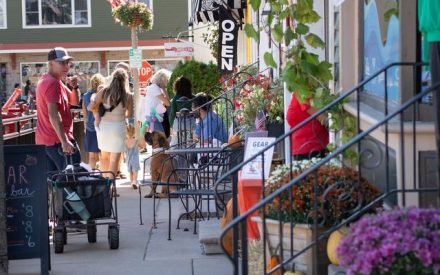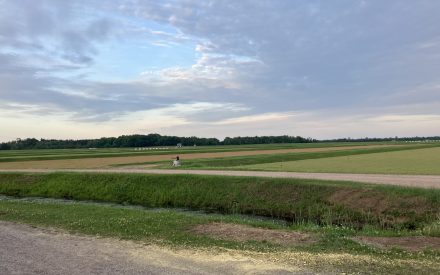(Image Source: Tierra Mallorca / Unsplash)
Wisconsin IDEA
Insight • Data • Economics • Analysis
Just Over 22 Percent of Homeowners, 43 Percent of Renters in the State are Cost-Burdened
The Community Development Institute at UW-Madison’s Division of Extension recently hosted a housing symposium that considered the role of housing in community and household economic well-being. Not surprisingly, housing affordability was a common theme mentioned by speakers and participants alike. While housing affordability can be assessed using a variety of measures, the presence of households who are “cost burdened” is a basic, commonly used indicator of housing cost stress. The U.S. Department of Housing and Urban Development (HUD) defines cost burdened households as those that “pay more than 30 percent of their income for housing.”
Nationally, 27.4% of owner-occupied housing units with a mortgage were cost burdened during the 2016-2020 period. Higher shares of cost burdened owner-occupied units were found in portions of coastal states, throughout the Rocky Mountain region and across many Appalachian counties. Compared to the national average, Wisconsin has a smaller overall share of cost-burdened owner-occupied housing units (22.2%). Nonetheless, several Wisconsin counties, including Menominee, Iron, Adams, Forest, Sawyer, and Vilas, had more than 30% of owner-occupied housing units above the cost burdened threshold. Several of these counties have high shares of seasonal and recreational housing that influence prices for owner-occupied housing.
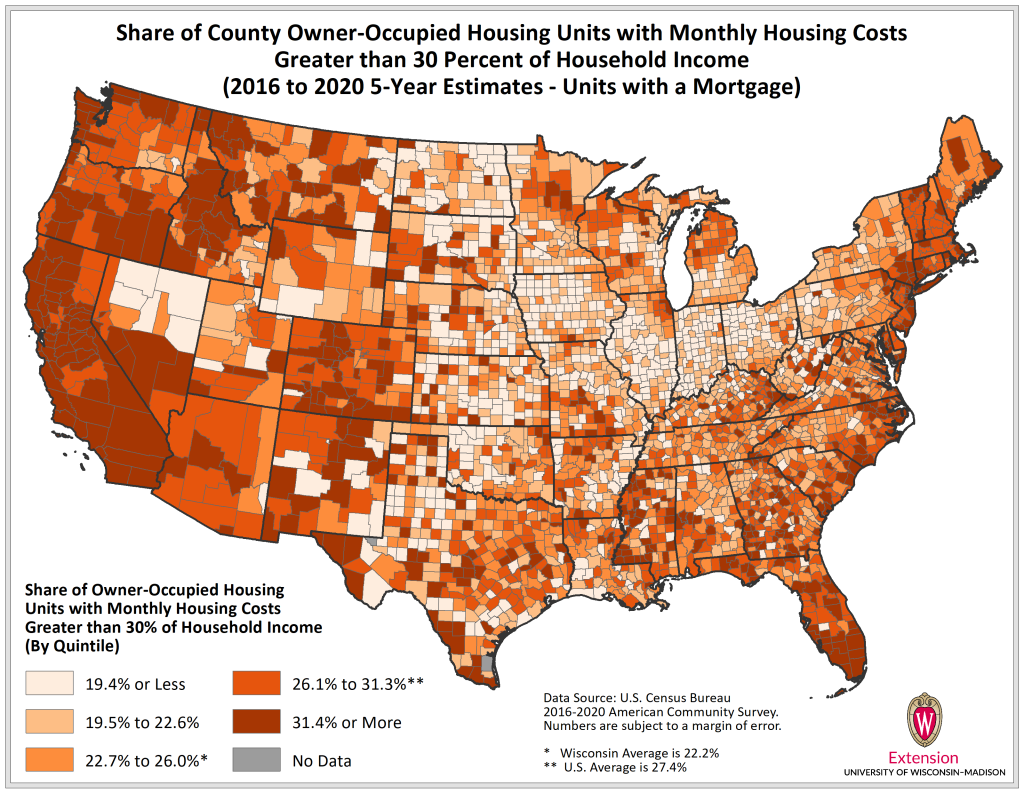
Compared to owner-occupied units with a mortgage, rental households are cost burdened at a greater rate in the United States (49.1%) and Wisconsin (43.2%). The geographic distribution of cost-burdened renters somewhat reflects that of cost burdened owner-occupied housing, with higher-than-average shares found throughout coastal states and portions of the mountainous west. While many counties have high shares of cost burdened owner and renter occupied housing units, the correlation between these two measures is somewhat weak (0.27). Several counties with high shares of cost-burdened renters are also home to numerous college students, such as Johnson County, IA (University of Iowa); Centre County, PA (Penn State University); and Riley County, KS (Kansas State University). Wisconsin counties with the highest shares of rent-burdened households include Iron, Ashland, Milwaukee, Lincoln, and Door. The estimates for several of these counties, however, are subject to notable margins of error.
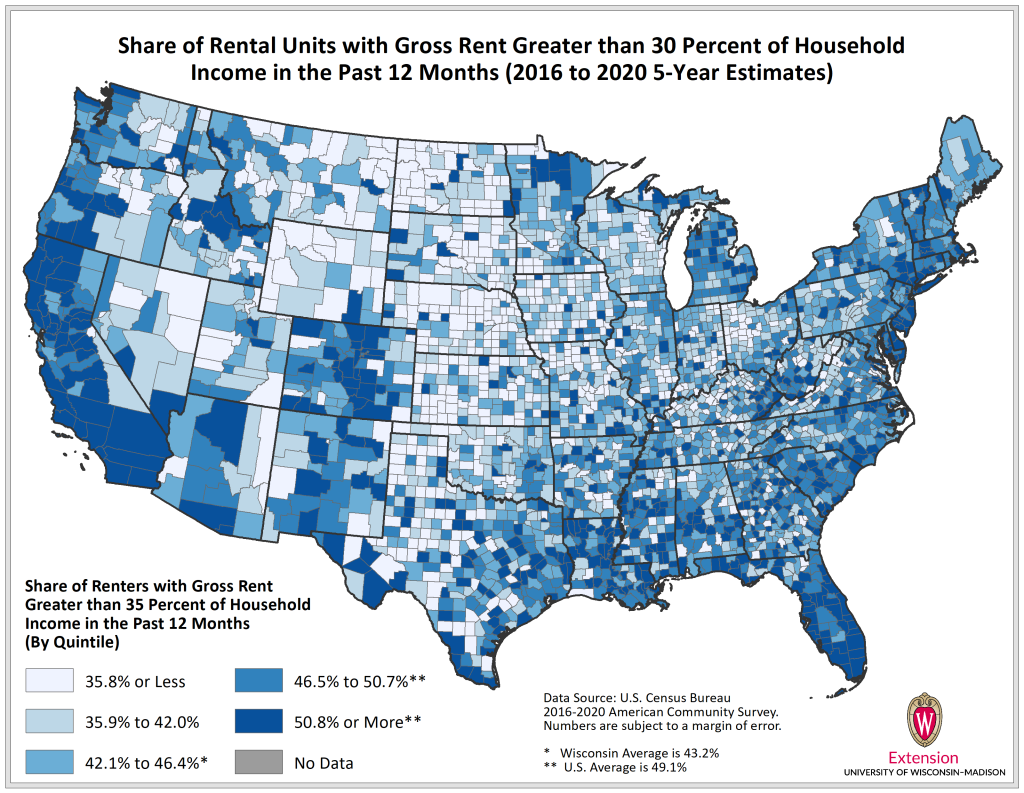
Defining cost burden using an income threshold of 30% provides a snapshot of housing affordability but is also an imperfect measure. First, the 30% level does not differentiate between households with higher or lower incomes. A household making $150,000 per year and spending more than 30% of its income on housing is more likely to have the financial resources to purchase other basic goods and services than a household with a $50,000 annual income. These differences are especially noteworthy given the current high inflation rates that disproportionately impact lower income households.
The household income distribution in an area may also mask differences in households that are cost burdened. Nationally, 59% of the owner-occupied housing units with a mortgage and a household income under $75,000 are cost-burdened compared to just 9.6% of households with incomes of $75,000 or more. Furthermore, the lack of cost burdened households in a given county does not necessarily mean that a region does not have an affordability concern. Some counties may have very few affordable housing units, which forces some employees to seek housing in surrounding areas and commute a longer distance. Consider Teton County, Wyoming, which is home to Jackson Hole ski resort and Grand Teton National Park. While the county shows a relatively small share of cost burdened rental housing units, the median monthly rent for Teton County is $1,402 which is significantly higher than surrounding counties that provide a large share Teton County’s workforce including Teton County, ID ($968), Lincoln County, WY ($710) and Bonneville County, ID ($814).



